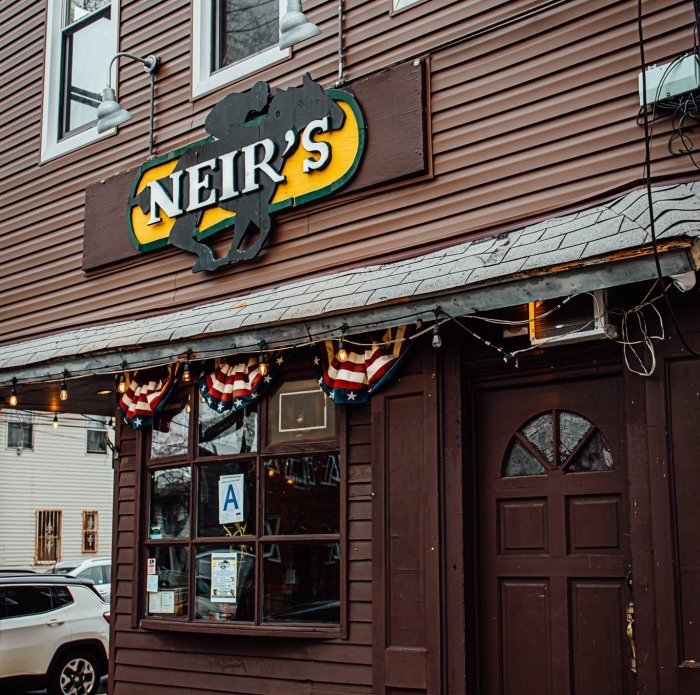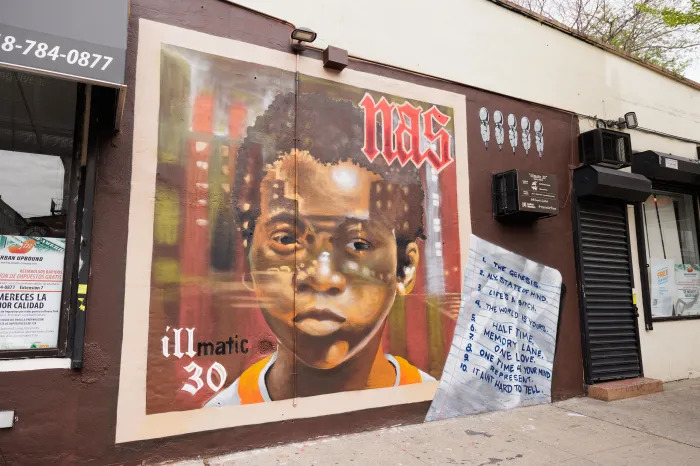By Kevin Zimmerman
For her first production as the Astoria Performing Arts Center’s artistic director, Dev Bondarin opted to dust off a legendary Broadway flop.
American theater giants Stephen Sondheim and George Furth wrote “Merrily We Roll Along” — based on an earlier George S. Kaufman and Moss Hart play — a musical tale that follows three friends as they pursue artistic careers in New York City over a two-decade span. The narrative unfolds backwards in time, beginning in 1976 and ending in 1957.
The show opened Nov. 16, 1981, at the Alvin (now the Neil Simon) Theater on W. 52nd Street in Manhattan.
It closed 12 days later.
“But it didn’t die there,” Bondarin said.
Quite the contrary.
Writer James Lapine joined the creative team and began to help redevelop the play. Songs were cut. Scenes were tweaked, added or even deleted. Productions of the ever-evolving piece were mounted by the York Theatre Co. in 1995 and again as part of City Center’s Encores season in 2012. APAC’s version was set to open this Thursday evening and run through May 23.
“It’s so inspiring,” Bondarin said. “They knew something was there. They knew it wasn’t finished.”
Bondarin has been inspired by “Merrily We Roll Along” since she was part of a production at Brandeis University about 20 years ago.
It was her senior year, and she had decided when she returned home to New York she would pursue a career in the theater. And just like the characters in the musical strive to accomplish greatness through their art, she and her fellow cast and crew mates believed they were on the verge of beginning a similar journey.
“The show really affected me,” she said. “We all really had one of those defining moments that mirror life.”
Although the show starts at the end — so the audience knows how it all turns out just as things get under way— Bondarin said the thrill is seeing how these characters become the people they do.
“We get to end at the beginning but we know how it ends in the end,” Bondarin said.
Which, she admits, sounds a bit confusing.
And that was one of the problems with the original production. Audiences had trouble following the story or even keeping the characters straight.
The solution in 1981 was to have cast members wear sweatshirts printed with words describing their relationships to the three leads.
But that is not the case here, where the show’s wardrobe designer, Jennifer Jacob, has culled real vintage pieces to incorporate with the theatrical garb.
“The costumes help tell the [scene’s] time,” Bondarin said. “It feels really authentic in a way. And that is very important.”
Another important aspect for Bondarin is making sure audiences understand the show is not restricted to hard-core theater folks.
People probably know some of the music without realizing those songs come from the show, including “Old Friends” and “Opening Doors,” Bondarin said.
And the show’s theme is definitely universal, she said.
“I think it speaks to the idea that we all have defining moments that can be beautiful or tragic,” Bondarin said. “And it shows you how one thing just leads to the next.”
Reach News Editor Kevin Zimmerman by e-mail at kzimm





























